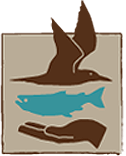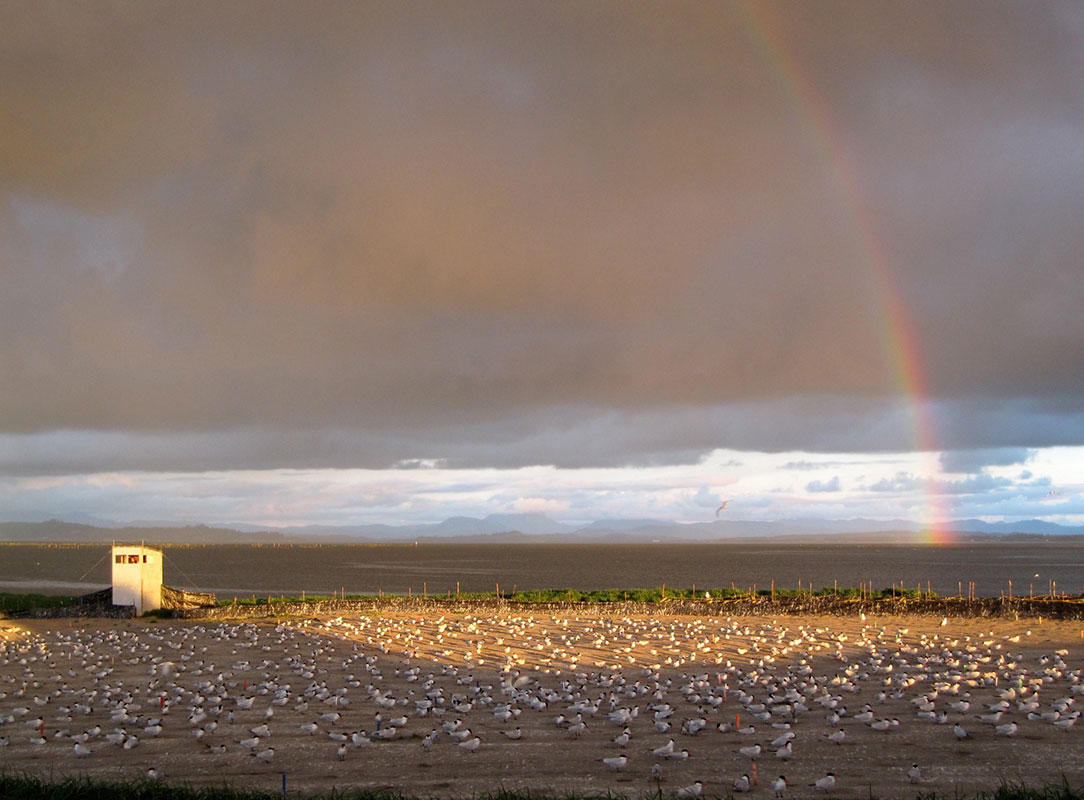 Rice IslandRice Island is located in the Columbia River estuary upstream from the city of Astoria (OR), and is owned by the Oregon Division of State Lands. Rice Island is a completely artificial dredged material disposal island that was first created in 1962; today it consists of ca. 250 acres of mostly bare sand habitat. In 1986, the island was colonized by Caspian terns and the colony rapidly grew in size from about 1,000 breeding pairs in 1986 to 8,700 pairs in 1998. In 1999, resource managers implemented a plan to relocate Caspian terns nesting at the western tip of Rice Island to restored tern nesting habitat on the eastern tip of East Sand Island in an effort to reduce tern consumption of juvenile salmonids. This approach was successful in completely relocating the tern colony to East Sand Island by 2001, where the colony has remained ever since. The former tern colony site on Rice Island has since become completely vegetated and consequently is unsuitable for tern nesting. Double-crested cormorants have also nested on the western tip of Rice Island, and in previous years the cormorant colony numbered as many as 1,500 nesting pairs. In recent years, however, cormorants have not nested on Rice Island. Currently, a nesting colony of glaucous-winged/western gulls and a newly formed ring-billed gull colony is located on the western tip of Rice Island, estimated to consist of about 1,300 and 230 breeding pairs, respectively.
Rice IslandRice Island is located in the Columbia River estuary upstream from the city of Astoria (OR), and is owned by the Oregon Division of State Lands. Rice Island is a completely artificial dredged material disposal island that was first created in 1962; today it consists of ca. 250 acres of mostly bare sand habitat. In 1986, the island was colonized by Caspian terns and the colony rapidly grew in size from about 1,000 breeding pairs in 1986 to 8,700 pairs in 1998. In 1999, resource managers implemented a plan to relocate Caspian terns nesting at the western tip of Rice Island to restored tern nesting habitat on the eastern tip of East Sand Island in an effort to reduce tern consumption of juvenile salmonids. This approach was successful in completely relocating the tern colony to East Sand Island by 2001, where the colony has remained ever since. The former tern colony site on Rice Island has since become completely vegetated and consequently is unsuitable for tern nesting. Double-crested cormorants have also nested on the western tip of Rice Island, and in previous years the cormorant colony numbered as many as 1,500 nesting pairs. In recent years, however, cormorants have not nested on Rice Island. Currently, a nesting colony of glaucous-winged/western gulls and a newly formed ring-billed gull colony is located on the western tip of Rice Island, estimated to consist of about 1,300 and 230 breeding pairs, respectively.



